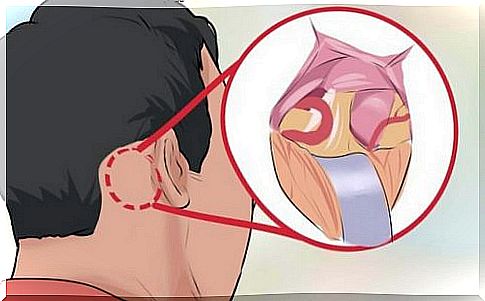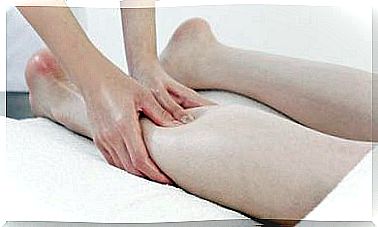5 Information About Trigeminal Neuralgia

Pain can be of many kinds. As you probably know, each type has a unique intensity and characteristics. But there is a form of pain that has been described as “the most terrible”: trigeminal neuralgia. To help you better understand this disease, in today’s article we present some information about trigeminal neuralgia.
The head has 12 pairs of nerves. In some people, one of these pairs may start to malfunction and, as a result, the patient will be overwhelmed with pain. Thus, trigeminal neuralgia is triggered.
Trigeminal neuralgia is not a new disease. It was first described by Areteus of Cappadocia in the 2nd century AD. It manifests itself in the form of a painful tick, like an electric shock radiating through the entire facial region between the cheekbones and chin.
If a certain disease affects us, it is good to know as much as possible about it. For this reason, in the following we present 5 information about trigeminal neuralgia.

1. What is trigeminal neuralgia?
Trigeminal neuralgia is a type of chronic pain caused by a certain nerve, from which the disease takes its name. The culprit for this pain is the fifth cranial nerve, the trigeminal nerve, which is the longest nerve in the cranial box.
The disease manifests itself in the form of a severe tick that can last between 2 seconds and 1 minute. During this time, the patient is paralyzed and, due to the intensity of the pain, is unable to chew or even speak.
When trigeminal neuralgia is triggered, the tick disappears relatively quickly. Over time, however, it can progress as the duration of the tic increases.
The trigeminal nerve has three branches that cover the region of the eyes, the scalp and the front of the head. This is why trigeminal neuralgia generally causes pain in the jaw, cheeks, lips, teeth or even gums.
The culprit is a blood vessel!
The main cause of this terrible pain is a simple blood vessel that compresses the trigeminal nerve to the point where it leaves the brain. This is possible because the protective sheath of the nerve is damaged, either due to the passage of time, or because the myelin of the nerve is attacked by a disease.
The progressive deterioration of the trigeminal nerve forces it to transmit abnormal signals to the brain. As a result, the patient experiences the most intense headache in existence.
2. Symptomatology, one of the most important information about trigeminal neuralgia
Episodes of trigeminal neuralgia occur suddenly. These are short-lived, but their intensity is so high that they have been compared to “electric shocks”. Initially, the patient may not realize what is happening to him and, because the pain passes quickly, he may not pay much attention to it.
Gradually, the frequency of attacks increases. After a while, the patient will not be able to touch his face, chew or brush his teeth, all these gestures triggering a new episode of pain.
The duration of an episode can vary from a few seconds to a full minute. Some people experience tics for several days, after which the next episode only starts in a month. But others may experience pain for months.
Due to the factors described above, the pain radiates to the cheeks, jaw, teeth, gums, lips and, less commonly, eyes and forehead. In general, only one part of the face will be affected, and the frequency of episodes will increase over time.
3. Who is prone to trigeminal neuralgia?

People over the age of 50 are the group most susceptible to trigeminal neuralgia, but young people can also be affected. This disease occurs more often in women than in men and is often hereditary.
4. What tests do I have to undergo?
A positive diagnosis of trigeminal neuralgia is necessary to be able to differentiate this disease from other conditions (such as migraines). The diagnosis is based on 3 factors:
- Type of pain: If it is short-lived, it is most likely trigeminal neuralgia.
- Pain location: An essential step in identifying trigeminal neuralgia is to determine which parts of the face are affected by the pain.
- Triggers: This type of neuralgia is often triggered by mild cheek stimulation, chewing and talking.
As soon as the doctor has clarified these issues, he will be able to recommend the following examinations:
- A neurological test
- An MRI
5. The main treatments

Pharmaceutical treatments
No matter what disease you suffer from, your doctor is able to prescribe you appropriate treatment. One of the most interesting information about trigeminal neuralgia is that regular anti-inflammatory and analgesic drugs will not work.
- Patients will need to take anticonvulsant medications to block that part of the nervous system that is malfunctioning.
- Tricyclic antidepressants are helpful when the pain becomes constant.
Surgical approach
If the medications listed in the previous subpoint do not provide the desired results, your doctor may recommend that you opt for a surgical approach. This can range from simple procedures to complex surgeries:
- Rhizotomy: A procedure that involves the destruction of certain nerve fibers to block abnormal signals.
- Balloon compression: This variant is simple and fast. The surgeon inserts a cannula through which he inserts a small balloon that compresses the trigeminal nerve, to prevent its overstimulation and pain.
- Glycerol injections: And this technique isolates the fibers of the trigeminal nerve, preventing painful “electric shocks”.
Last but not least, if none of these solutions work, your doctor will recommend a procedure called microvascular decompression.
This surgery is more delicate, but it is also the most effective option available. Its main advantage is that, once performed, trigeminal neuralgia will never return.
So, although trigeminal neuralgia causes “the worst pain in the world,” you won’t have to suffer for a lifetime. You can try several treatments.
Regardless of the circumstances, the most important thing is to be patient. Remember the 5 information about trigeminal neuralgia presented in this article, follow the advice received from your doctor and try several solutions until you discover one that ensures an optimal quality of life.
Main image source: wikiHow.com









